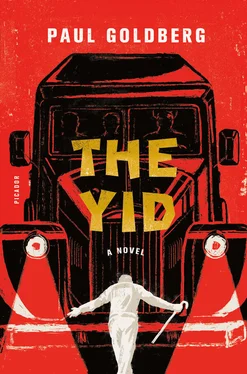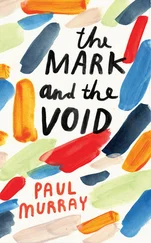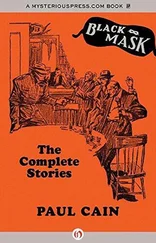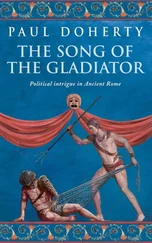Shtick is for the TBM. Art is for the soldier.
* * *
Malakhovka is a dacha settlement forty kilometers from Moscow, a quick train ride.
At the turn of the century, Moscow’s Jewish illuminati established a summer colony amid its gentle, wooded countryside. After the Revolution, the Jewish culture in Malakhovka revolved around the Orphanage of the Third International. There, the children could hear the writer Peretz Markish teach the works of Sholem Aleichem; they could learn drama from Mikhoels or Zuskin and art from Marc Chagall, a set designer who had just arrived in Moscow from Vitebsk.
In those days, Chagall’s interests included erasing the boundary between the players and the audience and using costume to create moving sculpture.
Now, the great names are gone. Mikhoels run over by a phantom truck, vilified upon death. Chagall, in Paris, makes poetry out of movement, building a fabulist past. Markish shot dead in the Lubyanka cellar. Zuskin dances foolishly on the clouds, an executioner’s bullet in his head, his calico dress in shreds.
* * *
In February, Malakhovka’s graceful dachas stand dark and empty behind tall fences.
Gusts of chilling wind whistle through the rotting latticework of the summer theater. Rowboats by the lake lie buried in snowdrifts. The gazebos — those shaded temples of tea-drinking rituals of the summer — stand deserted beneath the wrap of bare vines, and white marble lions of Judah survey the cloud-like expanse from the tombstones at the Jewish cemetery.
At dawn, the Black Maria approaches Kogan’s dacha, located on the edge of the Malakhovka Jewish cemetery.
The dacha used to be part of the grounds of a large, prerevolutionary estate. The original dacha, which belonged to a Moscow banker, burned down in the late 1920s. The plot was split into four pieces. Kogan has exactly a quarter of the original plot.
It is a simple peasant log hut, two rooms separated by a wood-burning stove and an open veranda. The stove is of typical Russian construction, large, white, with a heated surface to cook on in the area that serves as the kitchen. On the other side of the wall, there is a shelf Kogan can sleep on. This stone sleeping shelf makes the place usable even on the coldest winter days, which means Kogan can use it for his favorite pastimes: picking mushrooms in the summer and skiing in the winter.
Since paint was perpetually in short supply in the late twenties, when the place was built, the dacha was left unpainted. Kogan has done nothing to keep up or renovate the place.
The prerevolutionary owner of the dacha took great pains to shield his estate from the cemetery. This delineation of the romantic from the inevitable was accomplished with a hedge of pine trees, which now shade Kogan’s little world.
The Black Maria fits snugly between the line of trees, the house, and a shed. Like three blocks of lard, the corpses lie in their cage.
* * *
Lewis doesn’t get much sleep on February 24, just a couple of hours beneath a sheepskin, on a folding bed.
Anyone who has had the experience of coming awake on a jailhouse cot after a night of unbridled revelry would recognize the cluster of feelings Lewis experiences that morning.
On the bright side, there is the exhilaration of unknown origin, something that is a likely outcome of casting away the taboos, something fundamental, something liberating, something that, upon reflection, makes you wonder: “Did I actually do that?”
This sense of freedom is weighed down by dim memories of vows taken, deities acknowledged, deities cursed. “What did I do last night? Hmmm, let’s see, Comrade Lewis, you became an accessory to a triple murder of uniformed agents of state security, you took part in an effort to dispose of their bodies, you had a chance to run, but chose not to, and instead you joined a plot to murder the most powerful czar Russia has known. Now you find yourself on this cot, beneath this sheepskin, at this dacha. What the fuck are you going to do about that? Ideas? Regrets?”
Even after twenty-two years in the USSR, on some mornings, he wakes up thinking that he is in Chicago. That’s the magic of half-slumber: overshadowing reality, it leaves you not knowing where you are.
In Chicago, Lewis had a room on the South Side, near the university. He worked the night shift at the smelter between Chicago and Gary, and during the day he donned his Sunday best and attended classes.
He was the academic equivalent of a stowaway. Yet, in a class on Hegel, when other students meandered blindly between thesis, antithesis, and synthesis, the professor called on Lewis, the young man in the back of the room. He had the look of a student who understood, really understood the material. Even if he had been a bona fide student at the University of Chicago, Lewis wouldn’t have raised his hand. His primary purpose was to learn, not to demonstrate.
Soon after he poached the class on Hegel, Lewis was moved to day shift at the smelter and he continued on his course of acquiring knowledge, this time in solitude. His knowledge of Marxism-Leninism was impressive. Once Lewis was asked to teach a night class to other enlightened workers, only to learn that their enlightenment didn’t reach deep enough to enable them to take instruction in the philosophy of Marxism-Leninism from a black man. “What do you know about Hegel?” an Estonian comrade challenged Lewis on the first day. “You should be swinging from tree limbs.” The Estonian completed this criticism with what he surely thought was a cacophony of piercing sounds of baboons in the jungle. Far from ejecting the racist from the class, other workers laughed. No one attended Lewis’s second class. Even Lewis stayed home.
Marxism was Lewis’s escape route from the construct of race. Theoretically, a man is defined based on his class, which in turn is defined by the relationship to the ownership of the means of production. National origins and race are negated, voided. That is how it should be, yet race remained un-negated, menacing Lewis as he crossed the oceans, the steppes, and the frozen wilderness.
Had he escaped from the land of Jim Crow to become a trained baboon of World Revolution?
For a moment, he thinks that he is waking up in his room on the South Side, but that illusion vanishes as he takes a silent inventory of events of the previous night: “Siberia … Moscow … Levinson … corpses … whiteface … Black Maria … Kogan … dacha … escape … France … How the fuck did I get here?”
As soon as he asks the question, the answer comes: Solomon Mikhoels. Solomon fucking Mikhoels, the man Levinson called a gonif , a crook.
Were it not for Mikhoels, Lewis wouldn’t have come in contact with either Levinson or Kogan, wouldn’t have learned Yiddish, and — most important — wouldn’t be at this dacha, praying to God that no one would notice that a Black Maria and its crew have gone missing.
In 1932, Mikhoels was shooting a talking picture, his first and only. And it is true that the film required one happy, good-natured Negro to play an American Communist, a bricklayer who joins a Jewish comrade to build Socialism in the USSR.
The story was set in Magnitogorsk, a city located on the southern tip of the Ural Mountains, on the boundary between Europe and Asia. The city was named after a mountain of pure iron, a geological oddity. The name means the city of the Magnet Mountain.
The USSR built up massive capital by dumping gold and artwork onto the world market. The funds would finance rapid industrialization. To plan the project, in 1928, the USSR hired the Arthur G. McKee Company of Cleveland, giving it the task to replicate the city of Gary, Indiana, upon the Magnet Mountain.
The city and the steel mill went up rapidly, with only a loose plan.
Читать дальше












